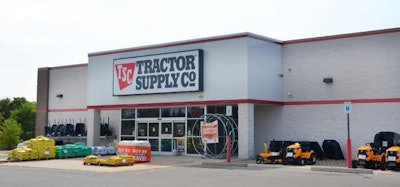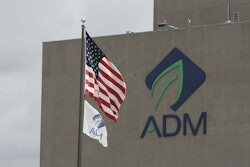
Pet food sales reached US$3.5 billion in 2015 in the US farm and feed channel, according to GfK. That represents about 500 farm-related stores in GfK’s database, as well as 5 percent year-over-year growth.
GfK tracks US pet food sales in three sub-channels of what it calls pet specialty: pet retailers (chain stores and independent pet shops), veterinary clinics and farm and feed. Combined, those accounted for US$13.1 billion in pet food sales in 2015, or about 43 percent of the overall US pet food market.
Farm and feed’s share of pet specialty was 25 percent and its share of the entire market, about 11.5 percent. Not bad for a channel known for specializing in barn equipment and feed for production animals. (For perspective, pet store sales came in at US$7.9 billion in 2015, more than 60 percent of pet specialty, while veterinary clinics registered only US$1.7 billion, about 13 percent.)
Why the growth in farm and feed? Because its pet-owning customers are starting to show the same needs and wants – and thus, purchasing behavior – as pet store customers, according to Maria Lange, business group director of GfK’s pet specialty practice. “Today’s rural customers increasingly want to treat their pets to the same healthy diets as urban and suburban pamperers,” she wrote recently for Pet Business magazine.
Currently, full pet food meals (as opposed to treats, mixers, toppers or similar products) dominate the farm and feed channel, at 90 percent, as does dog food at 85 percent. Larger quantities at lower prices has traditionally been the strategy for selling dog food in this channel, Lange said, with extra-large bags representing 75 percent of sales, almost twice as much as in pet stores. Similarly, the average price per pound for dry cat food in farm and feed is less than a dollar, compared to US$2.60 in pet stores.
More pets, less pet food spending
Several years ago, David Sprinkle, research director for Packaged Facts, delved into more detail on rural pet owners in the US, using Simmons national consumer survey data from Experian Marketing Services. He found that rural pet owners:
- Skewed toward multiple pet ownership, with 17.2 percent owning four or more dogs and 19.8 percent owning four or more cats;
- Were less likely to spend substantially on pet products, with only 25 percent saying they spend more than US$50 monthly (compared to 35 percent of urban or suburban pet owners);
- Were significantly less likely to shop at pet superstores;
- Were much less likely to buy specialty pet foods such as organic (4 percent versus 22 percent for urban pet owners), grain-free, non-GMO, high antioxidant, high omega-3, high probiotic, weight management or breed specific formulations;
- Were less likely to believe that high-quality pet foods are effective for preventive health care; only 24 percent of rural dog owners agreed with this statement, versus 39 percent of urban dog owns.
However, perhaps portending the opportunities pointed out by Lange, Sprinkle found then that rural pet owners were just as likely as urban pet owners to buy senior/anti-aging pet foods and were even more likely than urban pet owners (26 percent versus 22 percent) to seek out pet foods with meat or poultry as the first ingredient.
Lange reported that two trends still going strong in pet stores, natural and grain-free pet foods, are starting to gain a foothold in farm and feed. Natural pet foods now account for about 40 percent of revenue and nearly half of shelf space in that channel, while grain-free pet food tallies up at about 20 percent for both. Both categories still have a long way to go when compared with their performance in US pet stores, where natural pet foods have a 70 percent share of sales and 69 percent of shelf space; grain-free has 38 and 37 percent, respectively, in pet stores. That represents a growth opportunity for farm and feed.
Lange believes other pet food trends will start to take hold in farm and feed soon. “As this merging of customer bases continues, look for treats, cat food and canned products to gather steam in farm and feed, something that savvy manufacturers can stay ahead of with a fully data-driven approach,” Lange wrote.

















